
human
Human: AI-powered 3D Face Detection & Rotation Tracking, Face Description & Recognition, Body Pose Tracking, 3D Hand & Finger Tracking, Iris Analysis, Age & Gender & Emotion Prediction, Gaze Tracking, Gesture Recognition
Stars: 2005
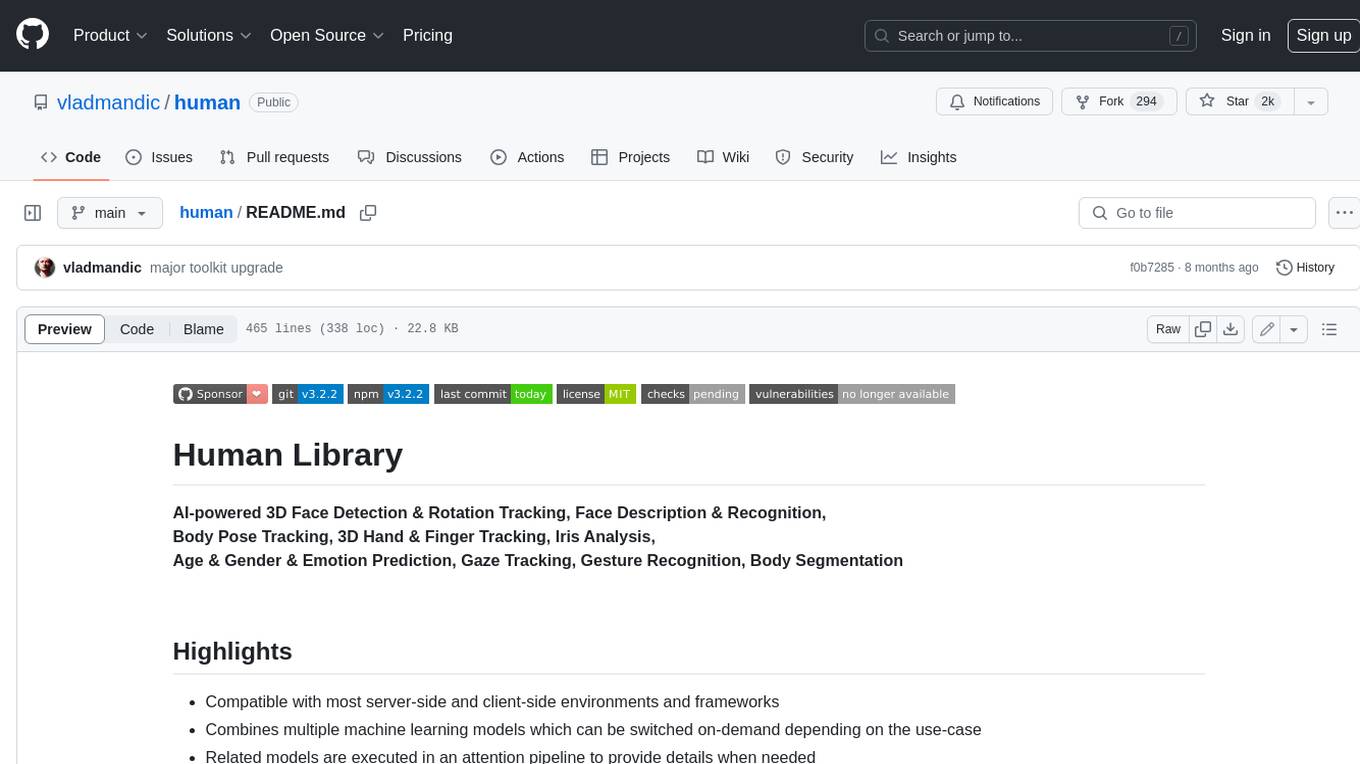
AI-powered 3D Face Detection & Rotation Tracking, Face Description & Recognition, Body Pose Tracking, 3D Hand & Finger Tracking, Iris Analysis, Age & Gender & Emotion Prediction, Gaze Tracking, Gesture Recognition, Body Segmentation
README:
AI-powered 3D Face Detection & Rotation Tracking, Face Description & Recognition,
Body Pose Tracking, 3D Hand & Finger Tracking, Iris Analysis,
Age & Gender & Emotion Prediction, Gaze Tracking, Gesture Recognition, Body Segmentation
- Compatible with most server-side and client-side environments and frameworks
- Combines multiple machine learning models which can be switched on-demand depending on the use-case
- Related models are executed in an attention pipeline to provide details when needed
- Optimized input pre-processing that can enhance image quality of any type of inputs
- Detection of frame changes to trigger only required models for improved performance
- Intelligent temporal interpolation to provide smooth results regardless of processing performance
- Simple unified API
- Built-in Image, Video and WebCam handling
-
Browser:
Compatible with both desktop and mobile platforms
Compatible with CPU, WebGL, WASM backends
Compatible with WebWorker execution
Compatible with WebView -
NodeJS:
Compatibile with WASM backend for executions on architectures where tensorflow binaries are not available
Compatible with tfjs-node using software execution via tensorflow shared libraries
Compatible with tfjs-node using GPU-accelerated execution via tensorflow shared libraries and nVidia CUDA
Check out Simple Live Demo fully annotated app as a good start starting point (html)(code)
Check out Main Live Demo app for advanced processing of of webcam, video stream or images static images with all possible tunable options
- To start video detection, simply press Play
- To process images, simply drag & drop in your Browser window
- Note: For optimal performance, select only models you'd like to use
- Note: If you have modern GPU, WebGL (default) backend is preferred, otherwise select WASM backend
All browser demos are self-contained without any external dependencies
- Full [Live] [Details]: Main browser demo app that showcases all Human capabilities
- Simple [Live] [Details]: Simple demo in WebCam processing demo in TypeScript
- Embedded [Live] [Details]: Even simpler demo with tiny code embedded in HTML file
- Face Detect [Live] [Details]: Extract faces from images and processes details
- Face Match [Live] [Details]: Extract faces from images, calculates face descriptors and similarities and matches them to known database
- Face ID [Live] [Details]: Runs multiple checks to validate webcam input before performing face match to faces in IndexDB
- Multi-thread [Live] [Details]: Runs each Human module in a separate web worker for highest possible performance
- NextJS [Live] [Details]: Use Human with TypeScript, NextJS and ReactJS
- ElectronJS [Details]: Use Human with TypeScript and ElectonJS to create standalone cross-platform apps
- 3D Analysis with BabylonJS [Live] [Details]: 3D tracking and visualization of heead, face, eye, body and hand
- VRM Virtual Model Tracking with Three.JS [Live] [Details]: VR model with head, face, eye, body and hand tracking
- VRM Virtual Model Tracking with BabylonJS [Live] [Details]: VR model with head, face, eye, body and hand tracking
NodeJS demos may require extra dependencies which are used to decode inputs
See header of each demo to see its dependencies as they are not automatically installed with Human
- Main [Details]: Process images from files, folders or URLs using native methods
-
Canvas [Details]: Process image from file or URL and draw results to a new image file using
node-canvas -
Video [Details]: Processing of video input using
ffmpeg -
WebCam [Details]: Processing of webcam screenshots using
fswebcam -
Events [Details]: Showcases usage of
Humaneventing to get notifications on processing - Similarity [Details]: Compares two input images for similarity of detected faces
- Face Match [Details]: Parallel processing of face match in multiple child worker threads
-
Multiple Workers [Details]: Runs multiple parallel
humanby dispaching them to pool of pre-created worker processes - Dynamic Load [Details]: Loads Human dynamically with multiple different desired backends
- Code Repository
- NPM Package
- Issues Tracker
- TypeDoc API Specification - Main class
- TypeDoc API Specification - Full
- Change Log
- Current To-do List
- Home
- Installation
- Usage & Functions
- Configuration Details
- Result Details
- Customizing Draw Methods
- Caching & Smoothing
- Input Processing
- Face Recognition & Face Description
- Gesture Recognition
- Common Issues
- Background and Benchmarks
- Comparing Backends
- Development Server
- Build Process
- Adding Custom Modules
- Performance Notes
- Performance Profiling
- Platform Support
- Diagnostic and Performance trace information
- Dockerize Human applications
- List of Models & Credits
- Models Download Repository
- Security & Privacy Policy
- License & Usage Restrictions
See issues and discussions for list of known limitations and planned enhancements
Suggestions are welcome!
Visit Examples gallery for more examples

All options as presented in the demo application...
demo/index.html

Results Browser:
[ Demo -> Display -> Show Results ]

-
Face Similarity Matching:
Extracts all faces from provided input images,
sorts them by similarity to selected face
and optionally matches detected face with database of known people to guess their names
-
Face Detect:
Extracts all detect faces from loaded images on-demand and highlights face details on a selected face
-
Face ID:
Performs validation check on a webcam input to detect a real face and matches it to known faces stored in database
- 3D Rendering:
- VR Model Tracking:
- Human as OS native application:
468-Point Face Mesh Defails:
(view in full resolution to see keypoints)
Simply load Human (IIFE version) directly from a cloud CDN in your HTML file:
(pick one: jsdelirv, unpkg or cdnjs)
<!DOCTYPE HTML>
<script src="https://cdn.jsdelivr.net/npm/@vladmandic/human/dist/human.js"></script>
<script src="https://unpkg.dev/@vladmandic/human/dist/human.js"></script>
<script src="https://cdnjs.cloudflare.com/ajax/libs/human/3.0.0/human.js"></script>For details, including how to use Browser ESM version or NodeJS version of Human, see Installation
Simple app that uses Human to process video input and
draw output on screen using internal draw helper functions
// create instance of human with simple configuration using default values
const config = { backend: 'webgl' };
const human = new Human.Human(config);
// select input HTMLVideoElement and output HTMLCanvasElement from page
const inputVideo = document.getElementById('video-id');
const outputCanvas = document.getElementById('canvas-id');
function detectVideo() {
// perform processing using default configuration
human.detect(inputVideo).then((result) => {
// result object will contain detected details
// as well as the processed canvas itself
// so lets first draw processed frame on canvas
human.draw.canvas(result.canvas, outputCanvas);
// then draw results on the same canvas
human.draw.face(outputCanvas, result.face);
human.draw.body(outputCanvas, result.body);
human.draw.hand(outputCanvas, result.hand);
human.draw.gesture(outputCanvas, result.gesture);
// and loop immediate to the next frame
requestAnimationFrame(detectVideo);
return result;
});
}
detectVideo();or using async/await:
// create instance of human with simple configuration using default values
const config = { backend: 'webgl' };
const human = new Human(config); // create instance of Human
const inputVideo = document.getElementById('video-id');
const outputCanvas = document.getElementById('canvas-id');
async function detectVideo() {
const result = await human.detect(inputVideo); // run detection
human.draw.all(outputCanvas, result); // draw all results
requestAnimationFrame(detectVideo); // run loop
}
detectVideo(); // start loopor using Events:
// create instance of human with simple configuration using default values
const config = { backend: 'webgl' };
const human = new Human(config); // create instance of Human
const inputVideo = document.getElementById('video-id');
const outputCanvas = document.getElementById('canvas-id');
human.events.addEventListener('detect', () => { // event gets triggered when detect is complete
human.draw.all(outputCanvas, human.result); // draw all results
});
function detectVideo() {
human.detect(inputVideo) // run detection
.then(() => requestAnimationFrame(detectVideo)); // upon detect complete start processing of the next frame
}
detectVideo(); // start loopor using interpolated results for smooth video processing by separating detection and drawing loops:
const human = new Human(); // create instance of Human
const inputVideo = document.getElementById('video-id');
const outputCanvas = document.getElementById('canvas-id');
let result;
async function detectVideo() {
result = await human.detect(inputVideo); // run detection
requestAnimationFrame(detectVideo); // run detect loop
}
async function drawVideo() {
if (result) { // check if result is available
const interpolated = human.next(result); // get smoothened result using last-known results
human.draw.all(outputCanvas, interpolated); // draw the frame
}
requestAnimationFrame(drawVideo); // run draw loop
}
detectVideo(); // start detection loop
drawVideo(); // start draw loopor same, but using built-in full video processing instead of running manual frame-by-frame loop:
const human = new Human(); // create instance of Human
const inputVideo = document.getElementById('video-id');
const outputCanvas = document.getElementById('canvas-id');
async function drawResults() {
const interpolated = human.next(); // get smoothened result using last-known results
human.draw.all(outputCanvas, interpolated); // draw the frame
requestAnimationFrame(drawResults); // run draw loop
}
human.video(inputVideo); // start detection loop which continously updates results
drawResults(); // start draw loopor using built-in webcam helper methods that take care of video handling completely:
const human = new Human(); // create instance of Human
const outputCanvas = document.getElementById('canvas-id');
async function drawResults() {
const interpolated = human.next(); // get smoothened result using last-known results
human.draw.canvas(outputCanvas, human.webcam.element); // draw current webcam frame
human.draw.all(outputCanvas, interpolated); // draw the frame detectgion results
requestAnimationFrame(drawResults); // run draw loop
}
await human.webcam.start({ crop: true });
human.video(human.webcam.element); // start detection loop which continously updates results
drawResults(); // start draw loopAnd for even better results, you can run detection in a separate web worker thread
Human library can process all known input types:
-
Image,ImageData,ImageBitmap,Canvas,OffscreenCanvas,Tensor, -
HTMLImageElement,HTMLCanvasElement,HTMLVideoElement,HTMLMediaElement
Additionally, HTMLVideoElement, HTMLMediaElement can be a standard <video> tag that links to:
- WebCam on user's system
- Any supported video type
e.g..mp4,.avi, etc. - Additional video types supported via HTML5 Media Source Extensions
e.g.: HLS (HTTP Live Streaming) usinghls.jsor DASH (Dynamic Adaptive Streaming over HTTP) usingdash.js - WebRTC media track using built-in support
Human is written using TypeScript strong typing and ships with full TypeDefs for all classes defined by the library bundled in types/human.d.ts and enabled by default
Note: This does not include embedded tfjs
If you want to use embedded tfjs inside Human (human.tf namespace) and still full typedefs, add this code:
import type * as tfjs from '@vladmandic/human/dist/tfjs.esm';
const tf = human.tf as typeof tfjs;
This is not enabled by default as Human does not ship with full TFJS TypeDefs due to size considerations
Enabling tfjs TypeDefs as above creates additional project (dev-only as only types are required) dependencies as defined in @vladmandic/human/dist/tfjs.esm.d.ts:
@tensorflow/tfjs-core, @tensorflow/tfjs-converter, @tensorflow/tfjs-backend-wasm, @tensorflow/tfjs-backend-webgl
Default models in Human library are:
- Face Detection: MediaPipe BlazeFace Back variation
- Face Mesh: MediaPipe FaceMesh
- Face Iris Analysis: MediaPipe Iris
- Face Description: HSE FaceRes
- Emotion Detection: Oarriaga Emotion
- Body Analysis: MoveNet Lightning variation
- Hand Analysis: HandTrack & MediaPipe HandLandmarks
- Body Segmentation: Google Selfie
- Object Detection: CenterNet with MobileNet v3
Note that alternative models are provided and can be enabled via configuration
For example, body pose detection by default uses MoveNet Lightning, but can be switched to MultiNet Thunder for higher precision or Multinet MultiPose for multi-person detection or even PoseNet, BlazePose or EfficientPose depending on the use case
For more info, see Configuration Details and List of Models
Human library is written in TypeScript 5.1 using TensorFlow/JS 4.10 and conforming to latest JavaScript ECMAScript version 2022 standard
Build target for distributables is JavaScript EMCAScript version 2018
For details see Wiki Pages
and API Specification
For Tasks:
Click tags to check more tools for each tasksFor Jobs:
Alternative AI tools for human
Similar Open Source Tools

human
AI-powered 3D Face Detection & Rotation Tracking, Face Description & Recognition, Body Pose Tracking, 3D Hand & Finger Tracking, Iris Analysis, Age & Gender & Emotion Prediction, Gaze Tracking, Gesture Recognition, Body Segmentation
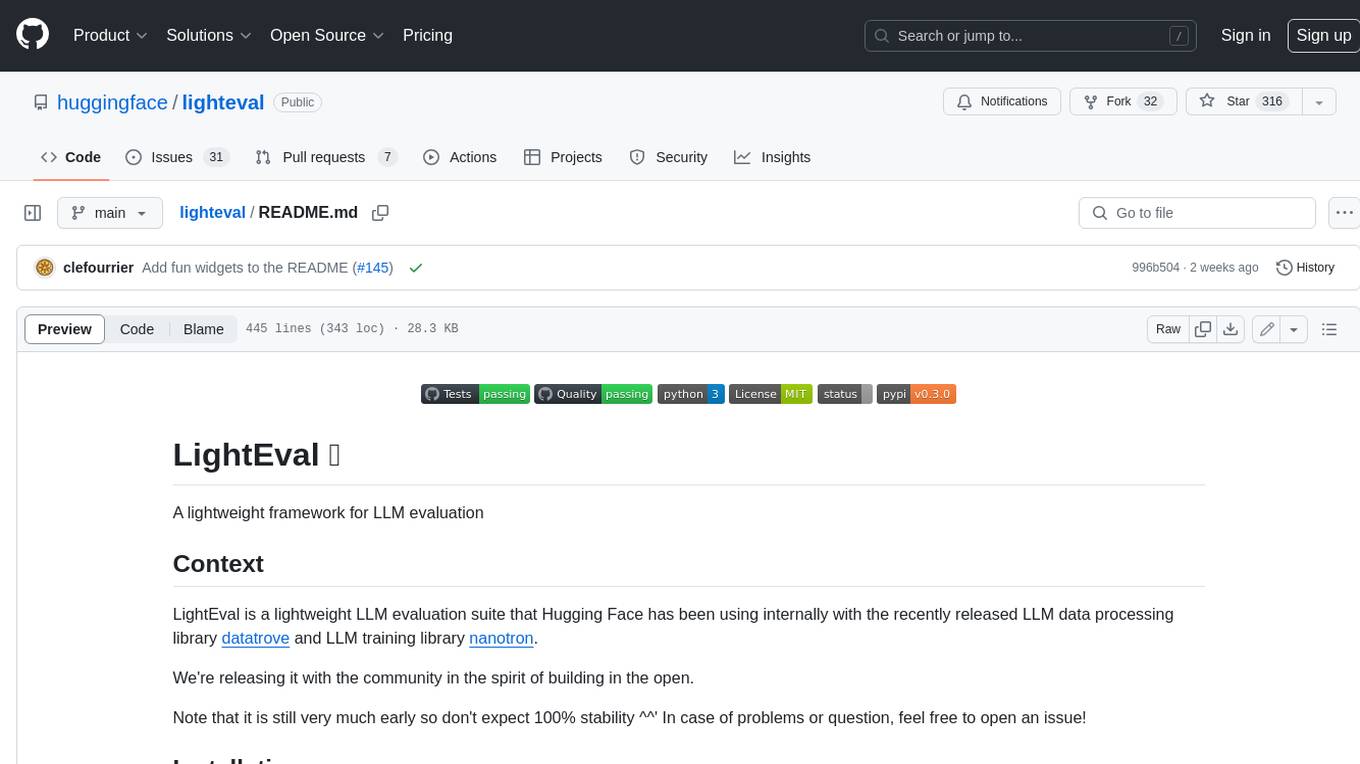
lighteval
LightEval is a lightweight LLM evaluation suite that Hugging Face has been using internally with the recently released LLM data processing library datatrove and LLM training library nanotron. We're releasing it with the community in the spirit of building in the open. Note that it is still very much early so don't expect 100% stability ^^' In case of problems or question, feel free to open an issue!
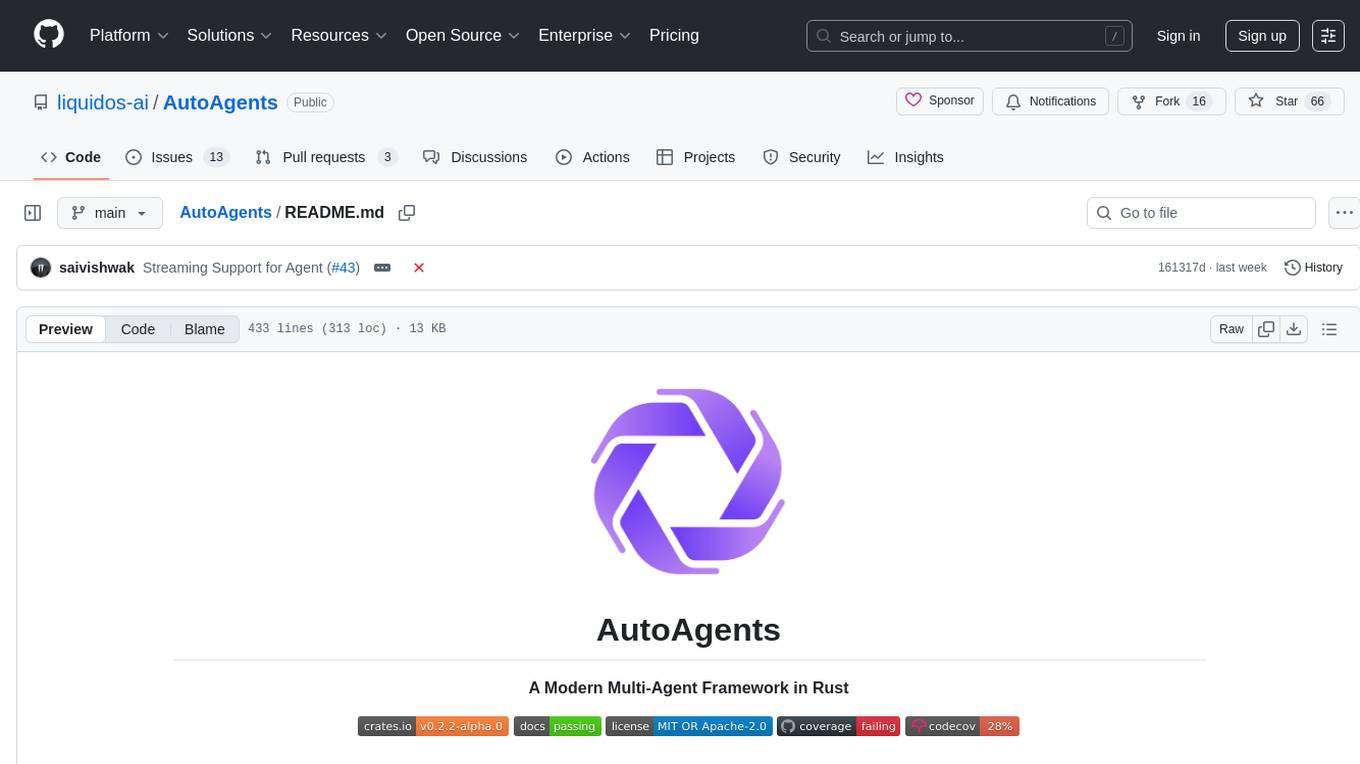
AutoAgents
AutoAgents is a cutting-edge multi-agent framework built in Rust that enables the creation of intelligent, autonomous agents powered by Large Language Models (LLMs) and Ractor. Designed for performance, safety, and scalability. AutoAgents provides a robust foundation for building complex AI systems that can reason, act, and collaborate. With AutoAgents you can create Cloud Native Agents, Edge Native Agents and Hybrid Models as well. It is so extensible that other ML Models can be used to create complex pipelines using Actor Framework.
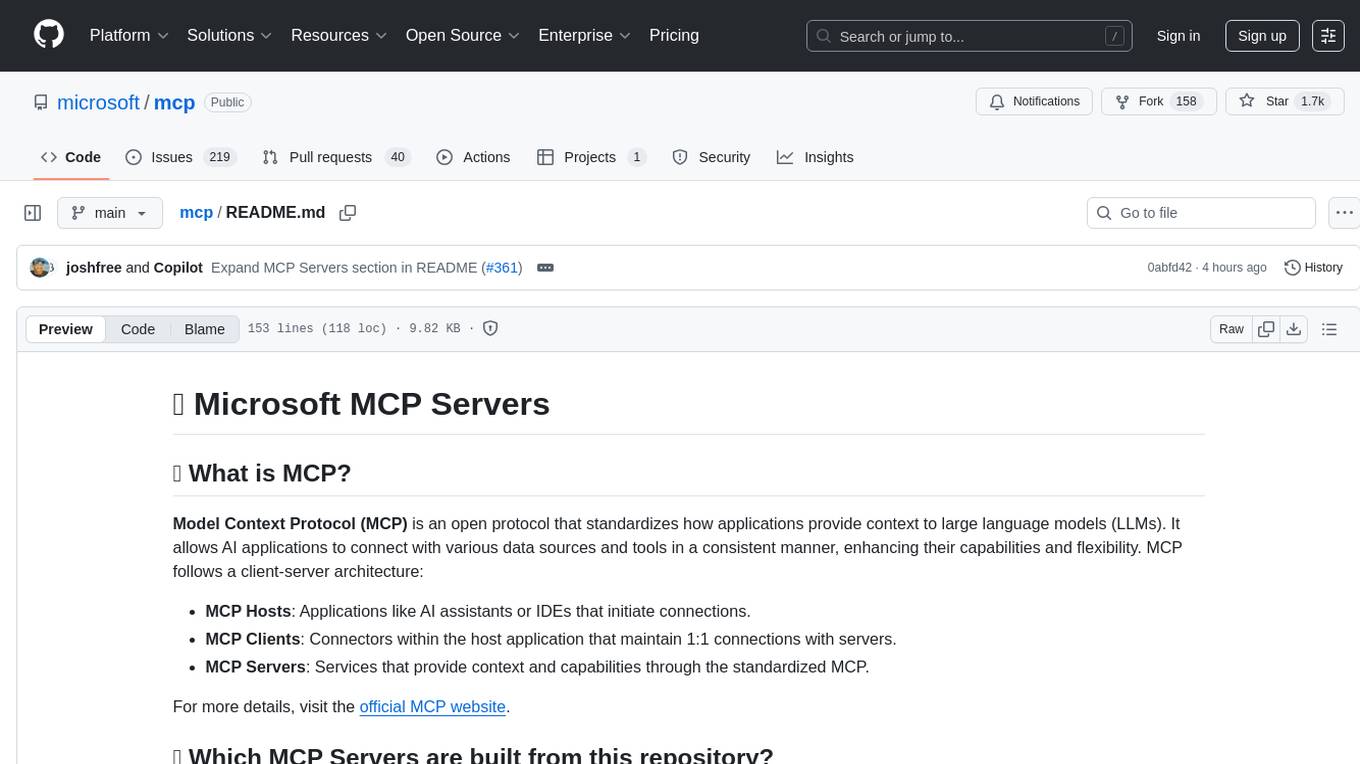
mcp
Model Context Protocol (MCP) is an open protocol that standardizes how applications provide context to large language models (LLMs). It allows AI applications to connect with various data sources and tools in a consistent manner, enhancing their capabilities and flexibility. This repository contains core libraries, test frameworks, engineering systems, pipelines, and tooling for Microsoft MCP Server contributors to unify engineering investments and reduce duplication and divergence. For more details, visit the official MCP website.
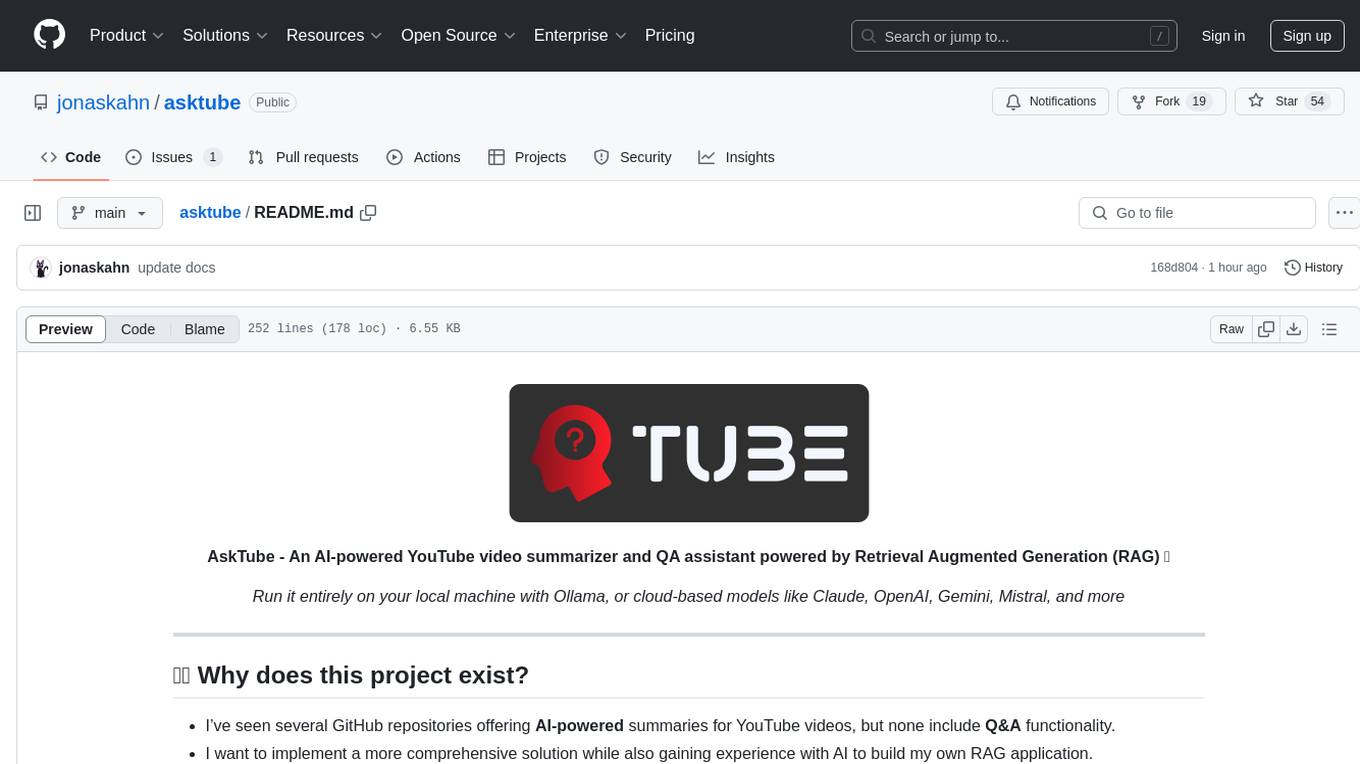
asktube
AskTube is an AI-powered YouTube video summarizer and QA assistant that utilizes Retrieval Augmented Generation (RAG) technology. It offers a comprehensive solution with Q&A functionality and aims to provide a user-friendly experience for local machine usage. The project integrates various technologies including Python, JS, Sanic, Peewee, Pytubefix, Sentence Transformers, Sqlite, Chroma, and NuxtJs/DaisyUI. AskTube supports multiple providers for analysis, AI services, and speech-to-text conversion. The tool is designed to extract data from YouTube URLs, store embedding chapter subtitles, and facilitate interactive Q&A sessions with enriched questions. It is not intended for production use but rather for end-users on their local machines.
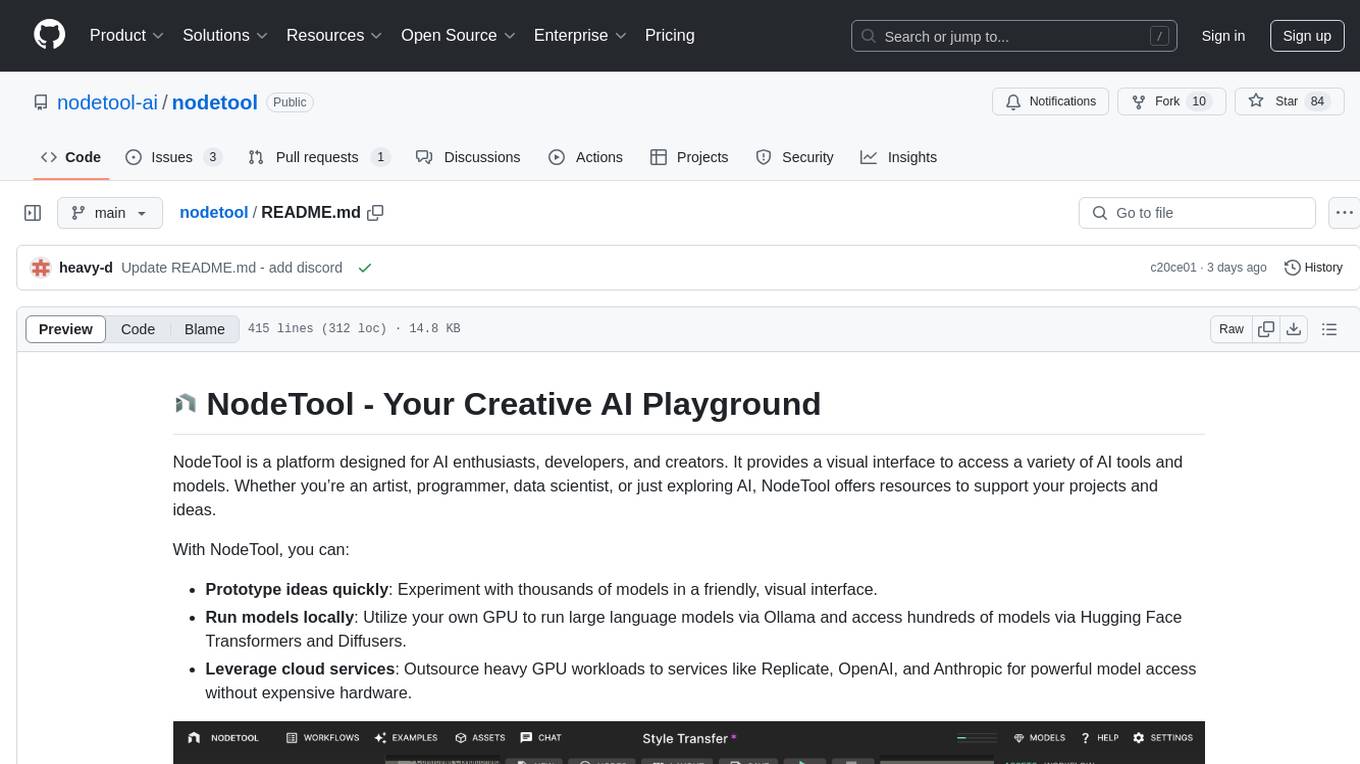
nodetool
NodeTool is a platform designed for AI enthusiasts, developers, and creators, providing a visual interface to access a variety of AI tools and models. It simplifies access to advanced AI technologies, offering resources for content creation, data analysis, automation, and more. With features like a visual editor, seamless integration with leading AI platforms, model manager, and API integration, NodeTool caters to both newcomers and experienced users in the AI field.
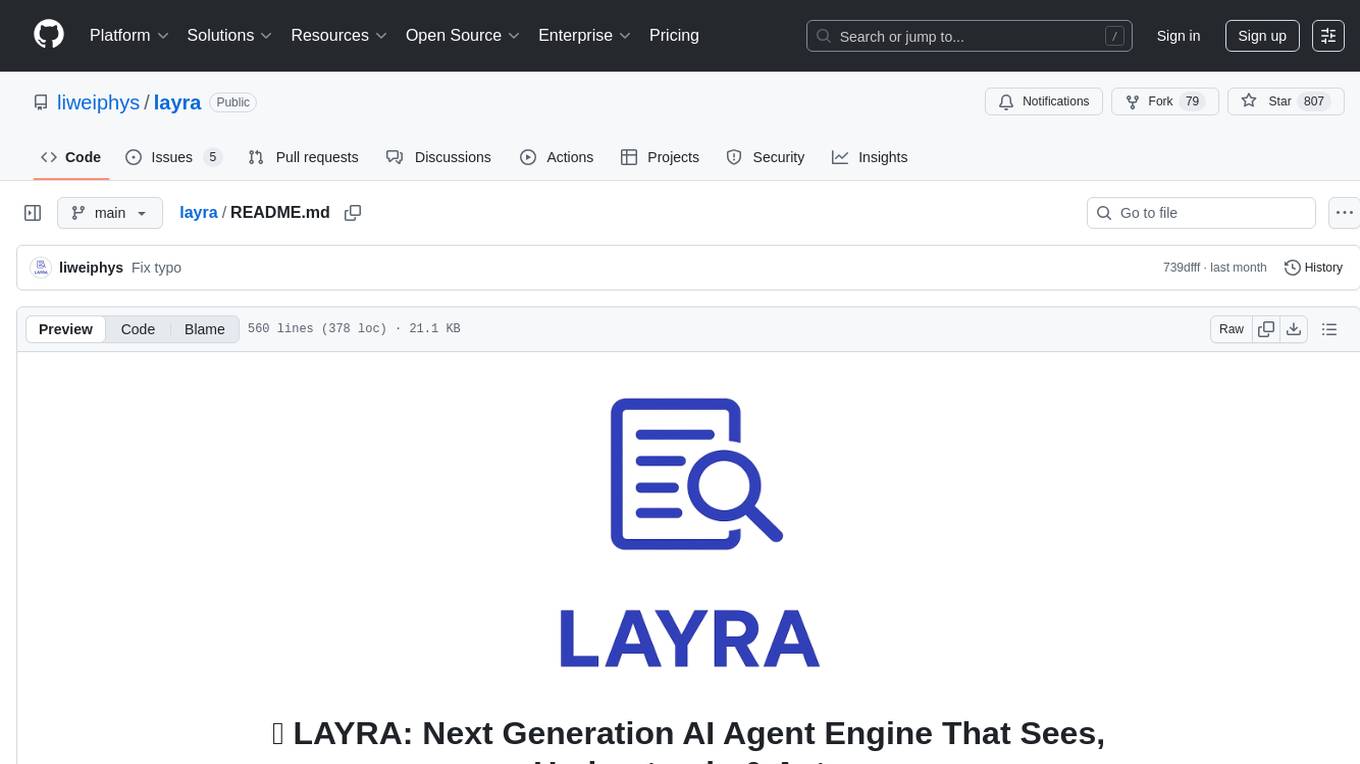
layra
LAYRA is the world's first visual-native AI automation engine that sees documents like a human, preserves layout and graphical elements, and executes arbitrarily complex workflows with full Python control. It empowers users to build next-generation intelligent systems with no limits or compromises. Built for Enterprise-Grade deployment, LAYRA features a modern frontend, high-performance backend, decoupled service architecture, visual-native multimodal document understanding, and a powerful workflow engine.
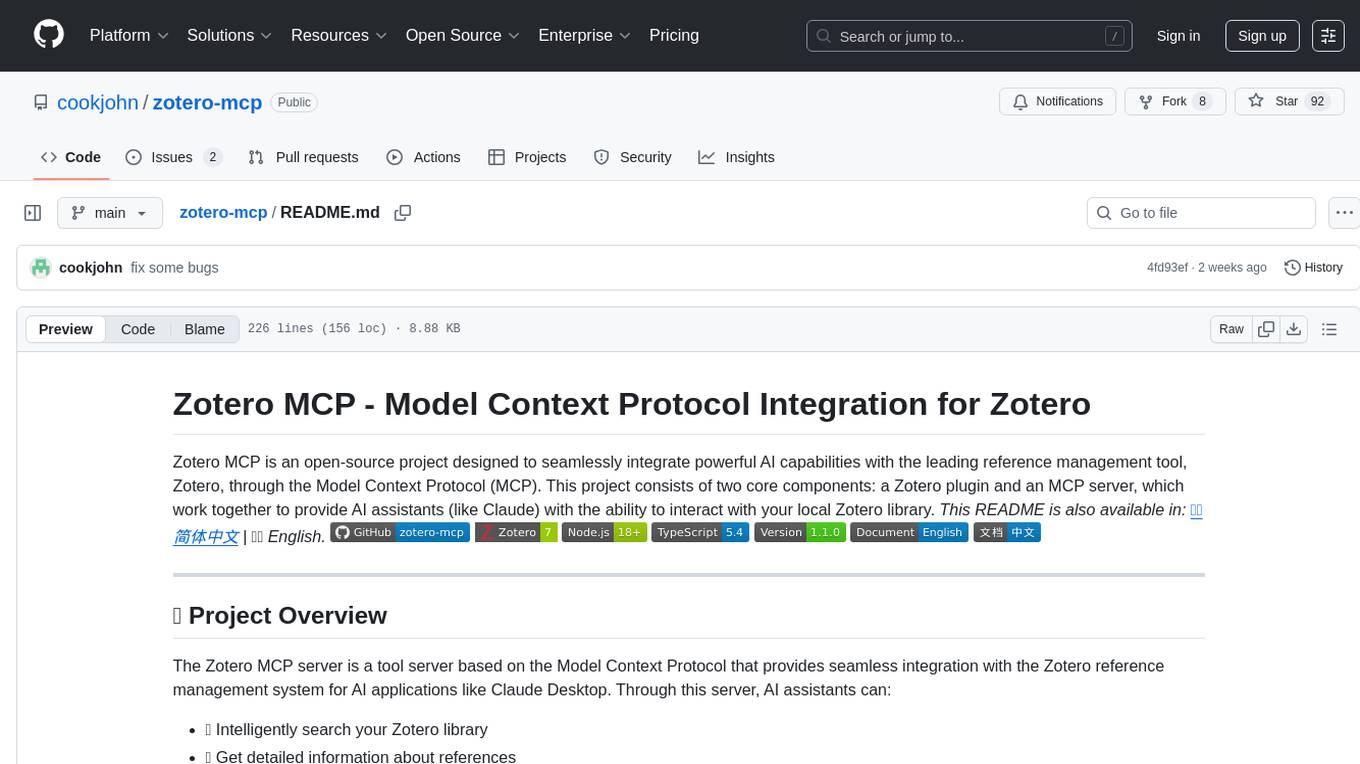
zotero-mcp
Zotero MCP is an open-source project that integrates AI capabilities with Zotero using the Model Context Protocol. It consists of a Zotero plugin and an MCP server, enabling AI assistants to search, retrieve, and cite references from Zotero library. The project features a unified architecture with an integrated MCP server, eliminating the need for a separate server process. It provides features like intelligent search, detailed reference information, filtering by tags and identifiers, aiding in academic tasks such as literature reviews and citation management.
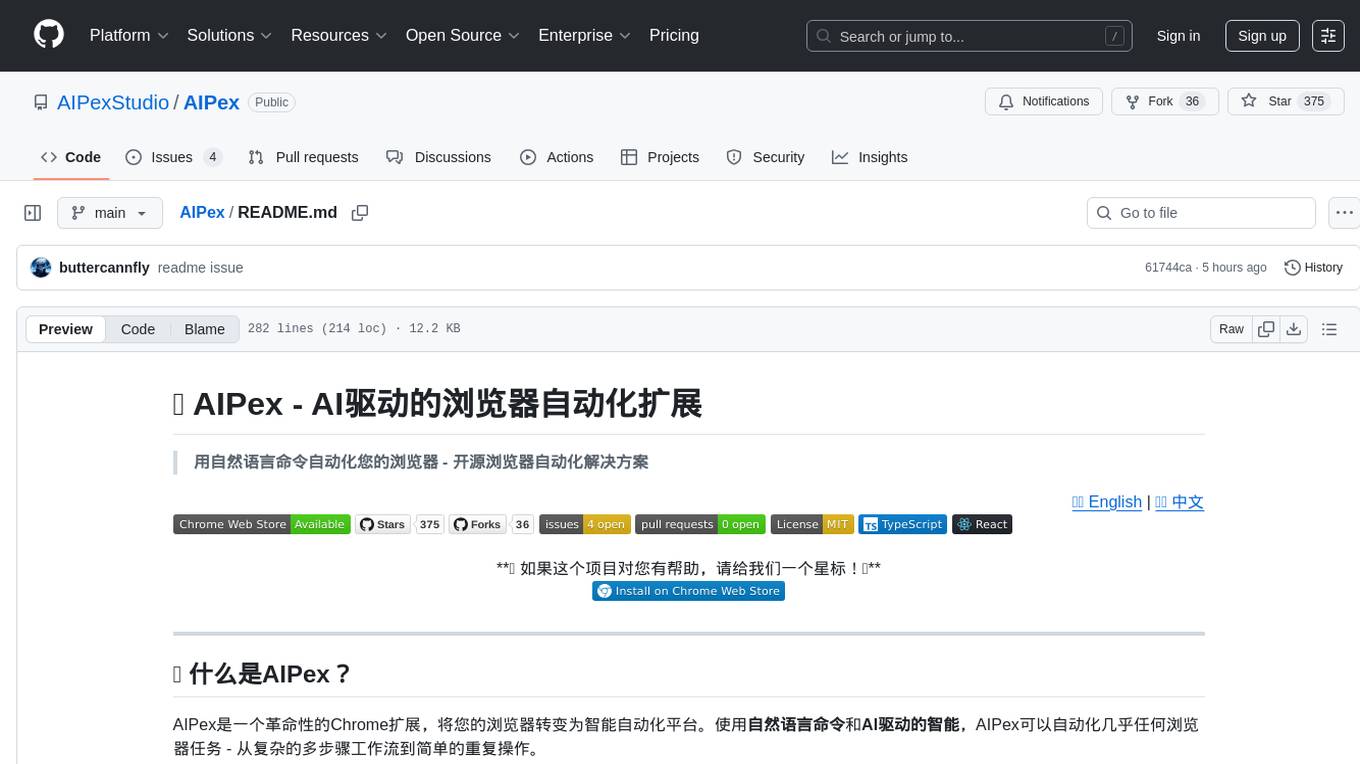
AIPex
AIPex is a revolutionary Chrome extension that transforms your browser into an intelligent automation platform. Using natural language commands and AI-powered intelligence, AIPex can automate virtually any browser task - from complex multi-step workflows to simple repetitive actions. It offers features like natural language control, AI-powered intelligence, multi-step automation, universal compatibility, smart data extraction, precision actions, form automation, visual understanding, developer-friendly with extensive API, and lightning-fast execution of automation tasks.
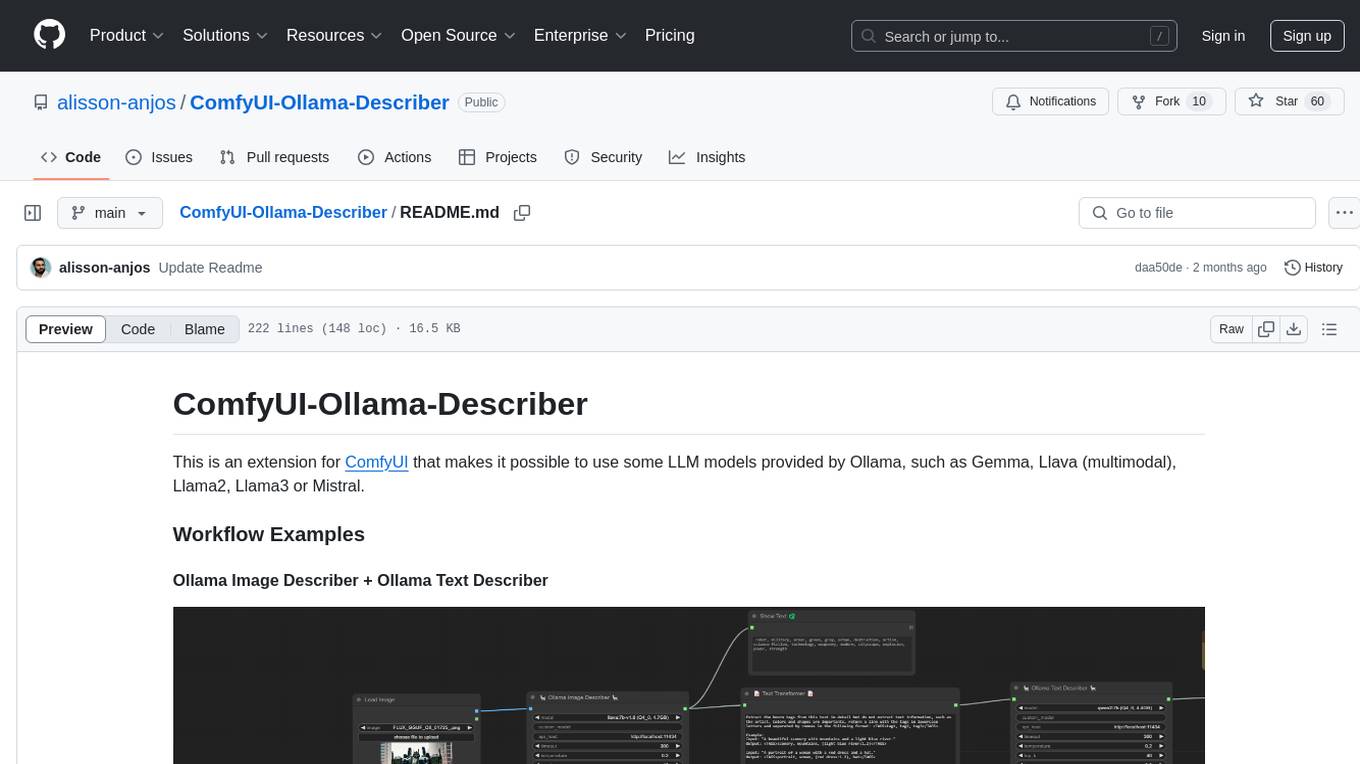
ComfyUI-Ollama-Describer
ComfyUI-Ollama-Describer is an extension for ComfyUI that enables the use of LLM models provided by Ollama, such as Gemma, Llava (multimodal), Llama2, Llama3, or Mistral. It requires the Ollama library for interacting with large-scale language models, supporting GPUs using CUDA and AMD GPUs on Windows, Linux, and Mac. The extension allows users to run Ollama through Docker and utilize NVIDIA GPUs for faster processing. It provides nodes for image description, text description, image captioning, and text transformation, with various customizable parameters for model selection, API communication, response generation, and model memory management.
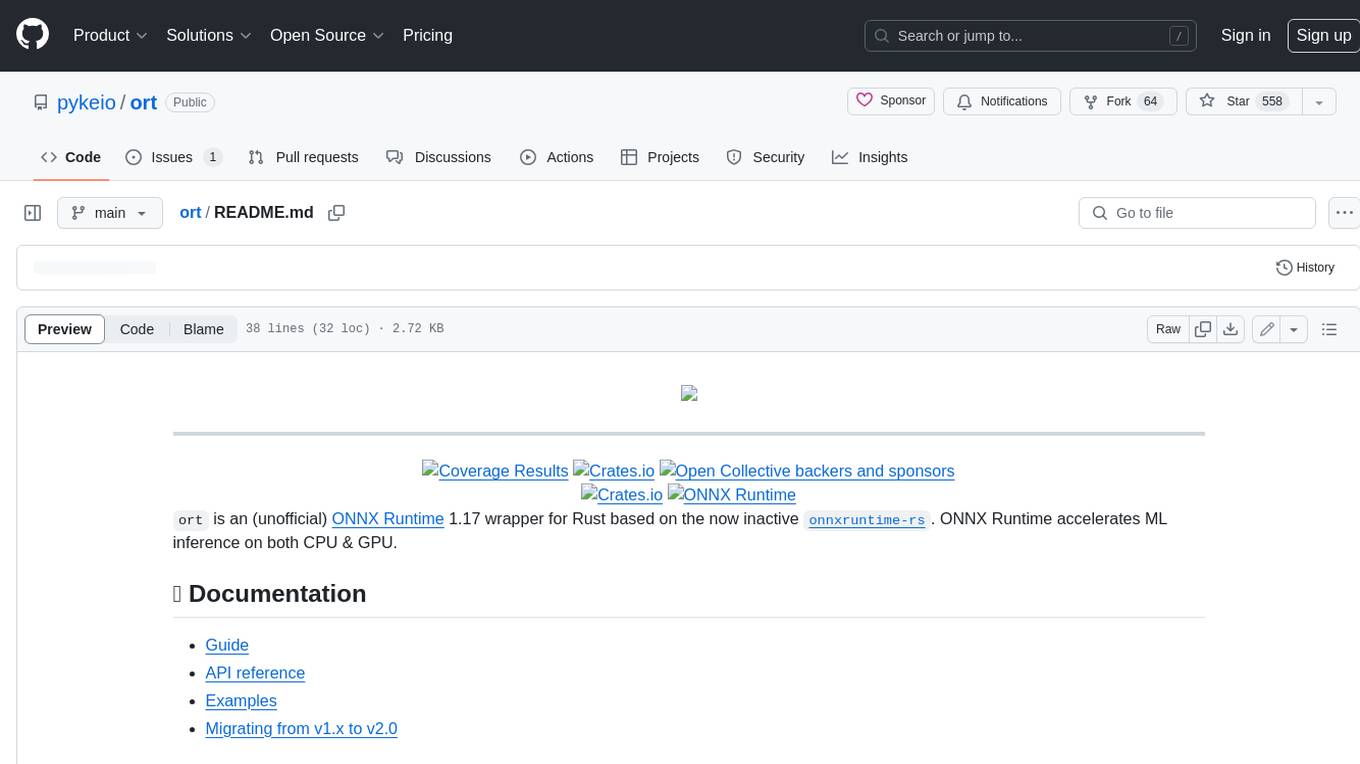
ort
Ort is an unofficial ONNX Runtime 1.17 wrapper for Rust based on the now inactive onnxruntime-rs. ONNX Runtime accelerates ML inference on both CPU and GPU.
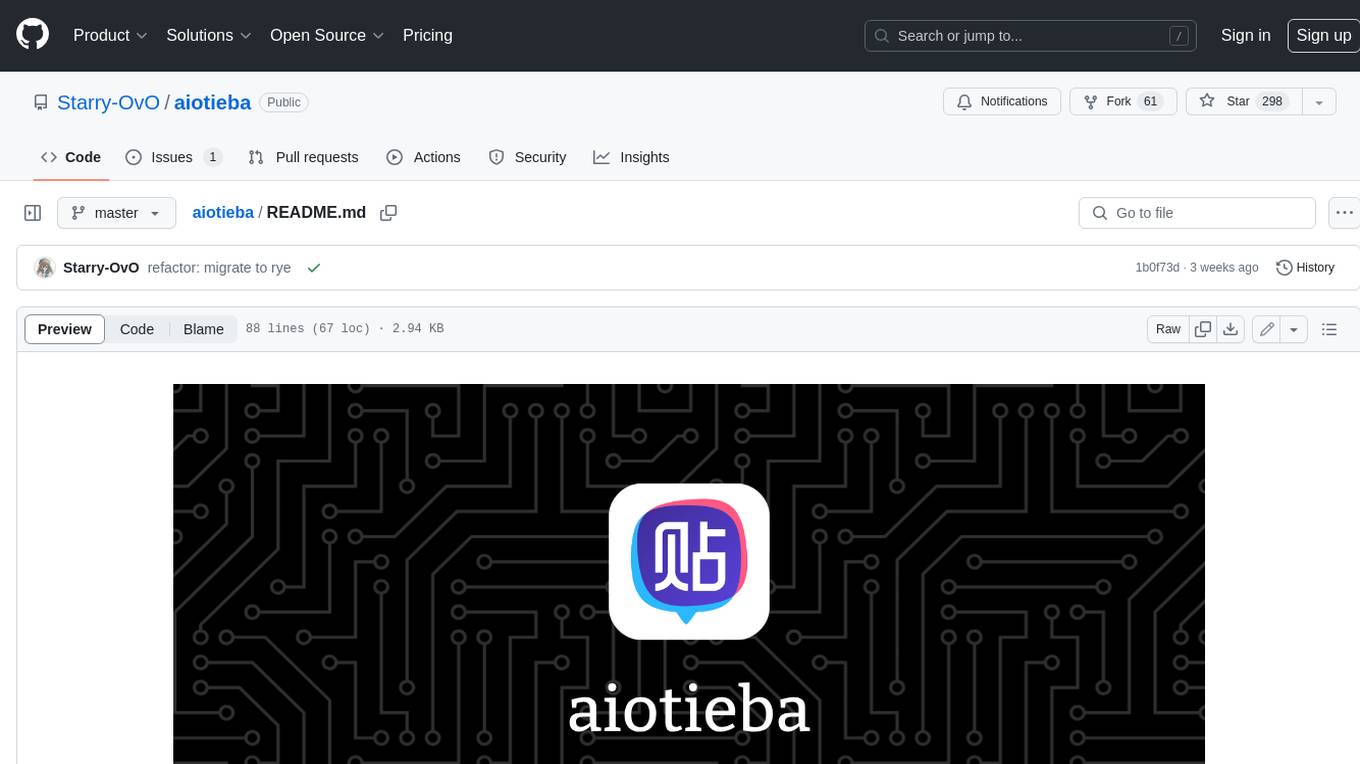
aiotieba
Aiotieba is an asynchronous Python library for interacting with the Tieba API. It provides a comprehensive set of features for working with Tieba, including support for authentication, thread and post management, and image and file uploading. Aiotieba is well-documented and easy to use, making it a great choice for developers who want to build applications that interact with Tieba.
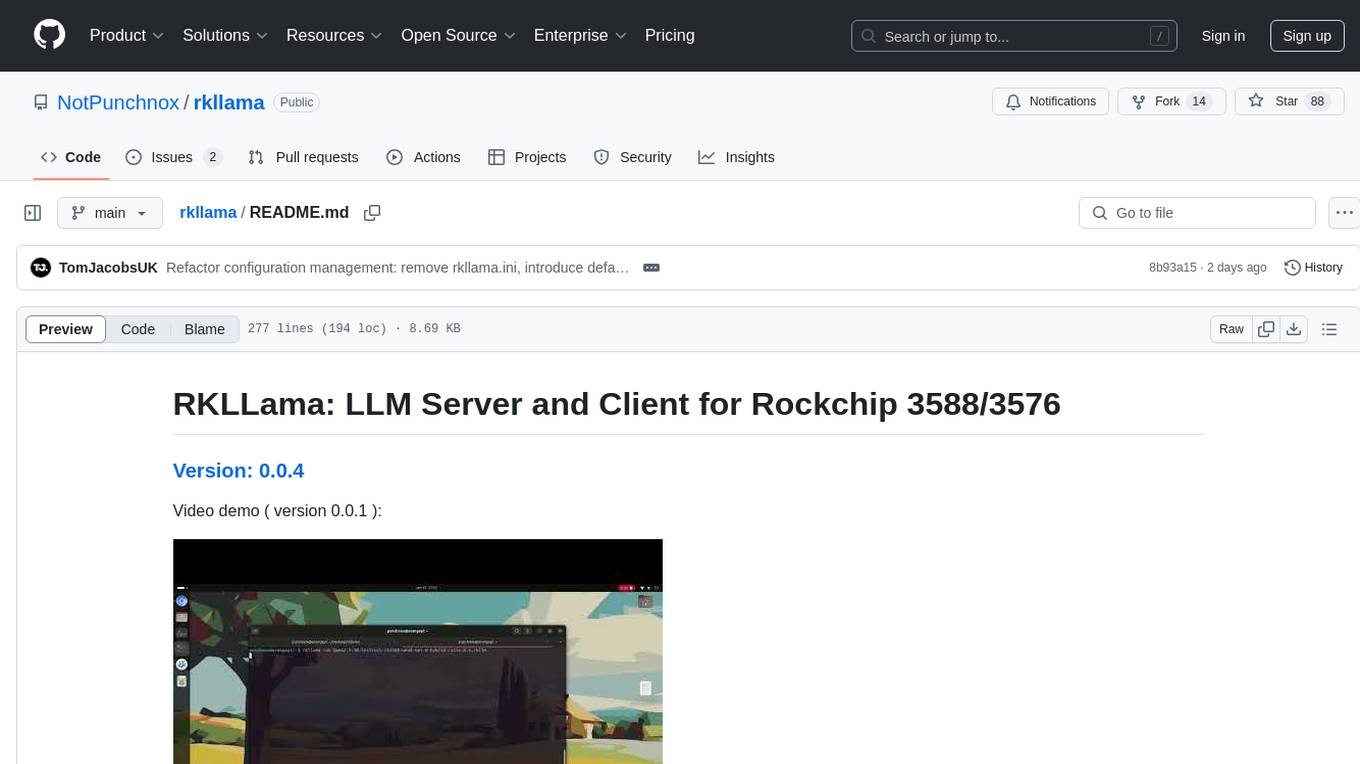
rkllama
RKLLama is a server and client tool designed for running and interacting with LLM models optimized for Rockchip RK3588(S) and RK3576 platforms. It allows models to run on the NPU, with features such as running models on NPU, partial Ollama API compatibility, pulling models from Huggingface, API REST with documentation, dynamic loading/unloading of models, inference requests with streaming modes, simplified model naming, CPU model auto-detection, and optional debug mode. The tool supports Python 3.8 to 3.12 and has been tested on Orange Pi 5 Pro and Orange Pi 5 Plus with specific OS versions.
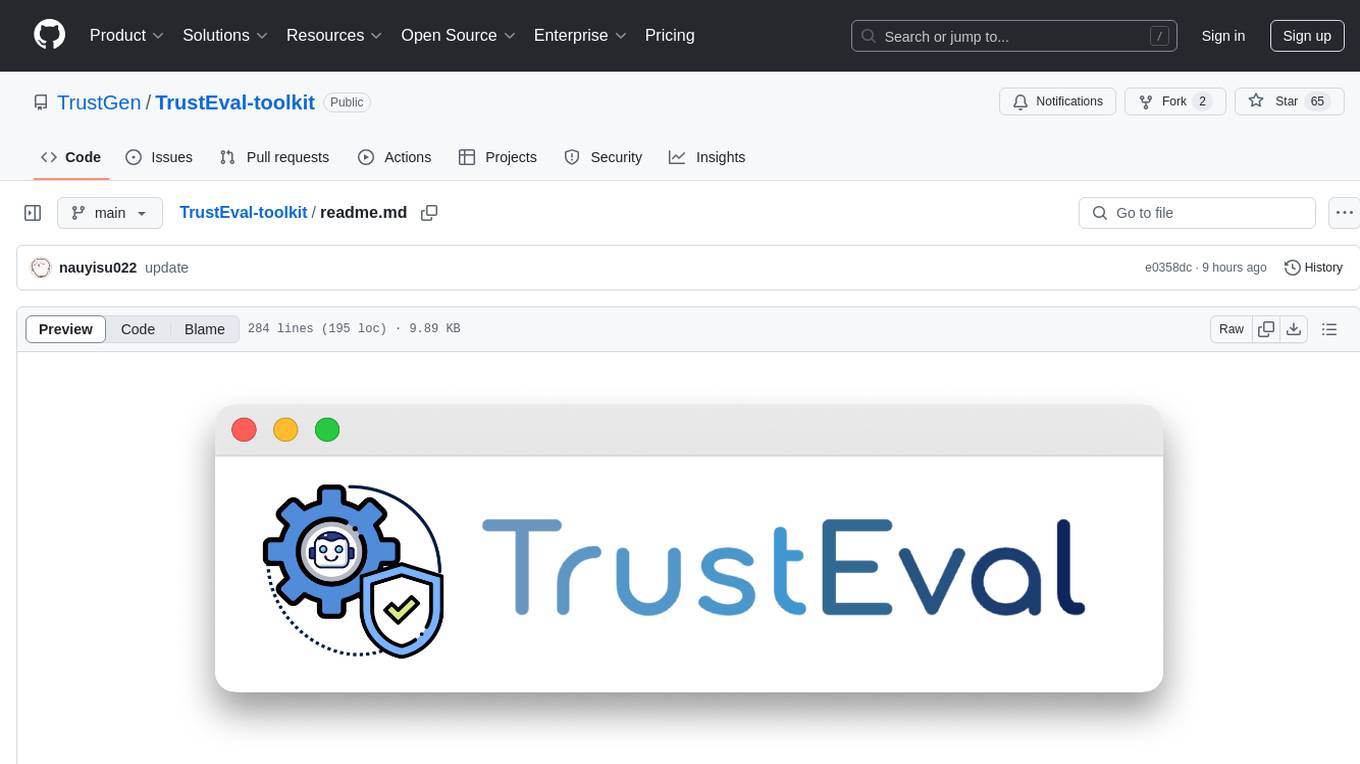
TrustEval-toolkit
TrustEval-toolkit is a dynamic and comprehensive framework for evaluating the trustworthiness of Generative Foundation Models (GenFMs) across dimensions such as safety, fairness, robustness, privacy, and more. It offers features like dynamic dataset generation, multi-model compatibility, customizable metrics, metadata-driven pipelines, comprehensive evaluation dimensions, optimized inference, and detailed reports.

ebook2audiobook
ebook2audiobook is a CPU/GPU converter tool that converts eBooks to audiobooks with chapters and metadata using tools like Calibre, ffmpeg, XTTSv2, and Fairseq. It supports voice cloning and a wide range of languages. The tool is designed to run on 4GB RAM and provides a new v2.0 Web GUI interface for user-friendly interaction. Users can convert eBooks to text format, split eBooks into chapters, and utilize high-quality text-to-speech functionalities. Supported languages include Arabic, Chinese, English, French, German, Hindi, and many more. The tool can be used for legal, non-DRM eBooks only and should be used responsibly in compliance with applicable laws.
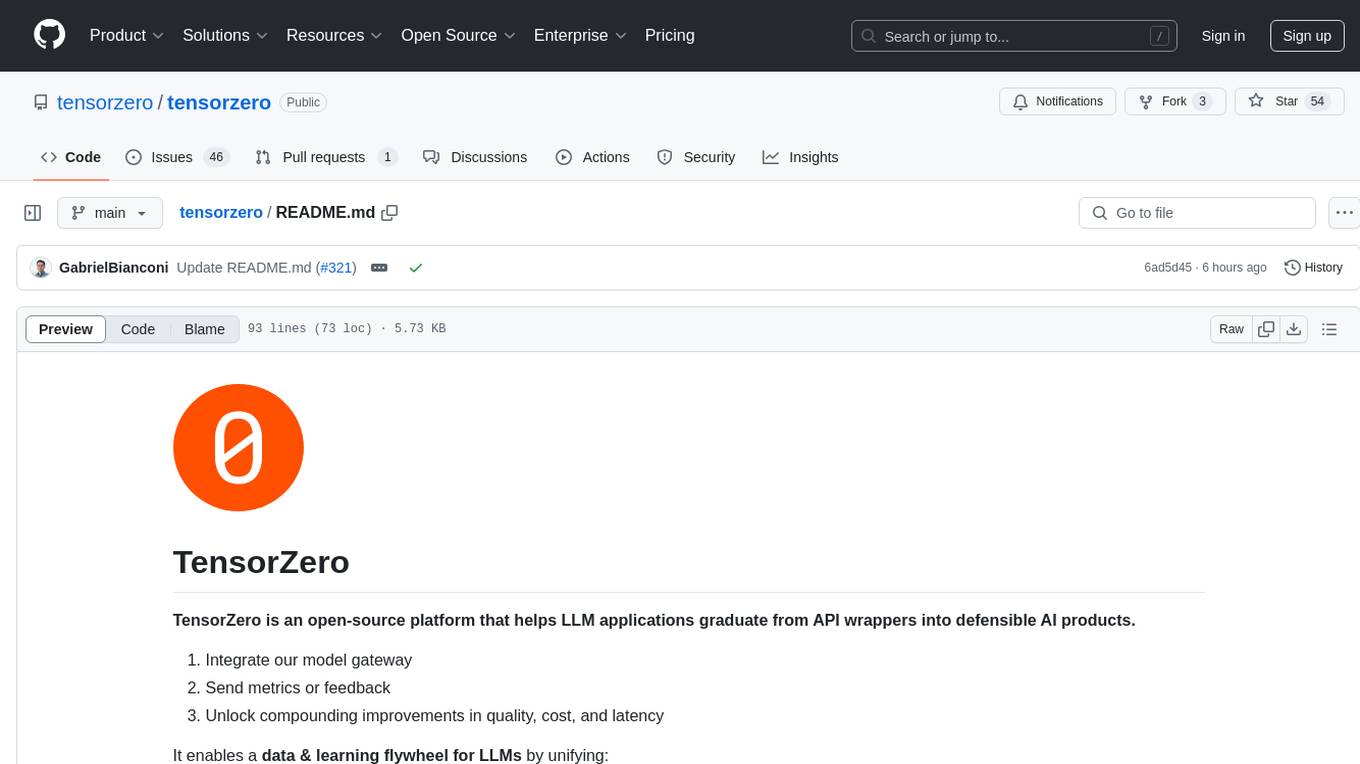
tensorzero
TensorZero is an open-source platform that helps LLM applications graduate from API wrappers into defensible AI products. It enables a data & learning flywheel for LLMs by unifying inference, observability, optimization, and experimentation. The platform includes a high-performance model gateway, structured schema-based inference, observability, experimentation, and data warehouse for analytics. TensorZero Recipes optimize prompts and models, and the platform supports experimentation features and GitOps orchestration for deployment.
For similar tasks

human
AI-powered 3D Face Detection & Rotation Tracking, Face Description & Recognition, Body Pose Tracking, 3D Hand & Finger Tracking, Iris Analysis, Age & Gender & Emotion Prediction, Gaze Tracking, Gesture Recognition, Body Segmentation
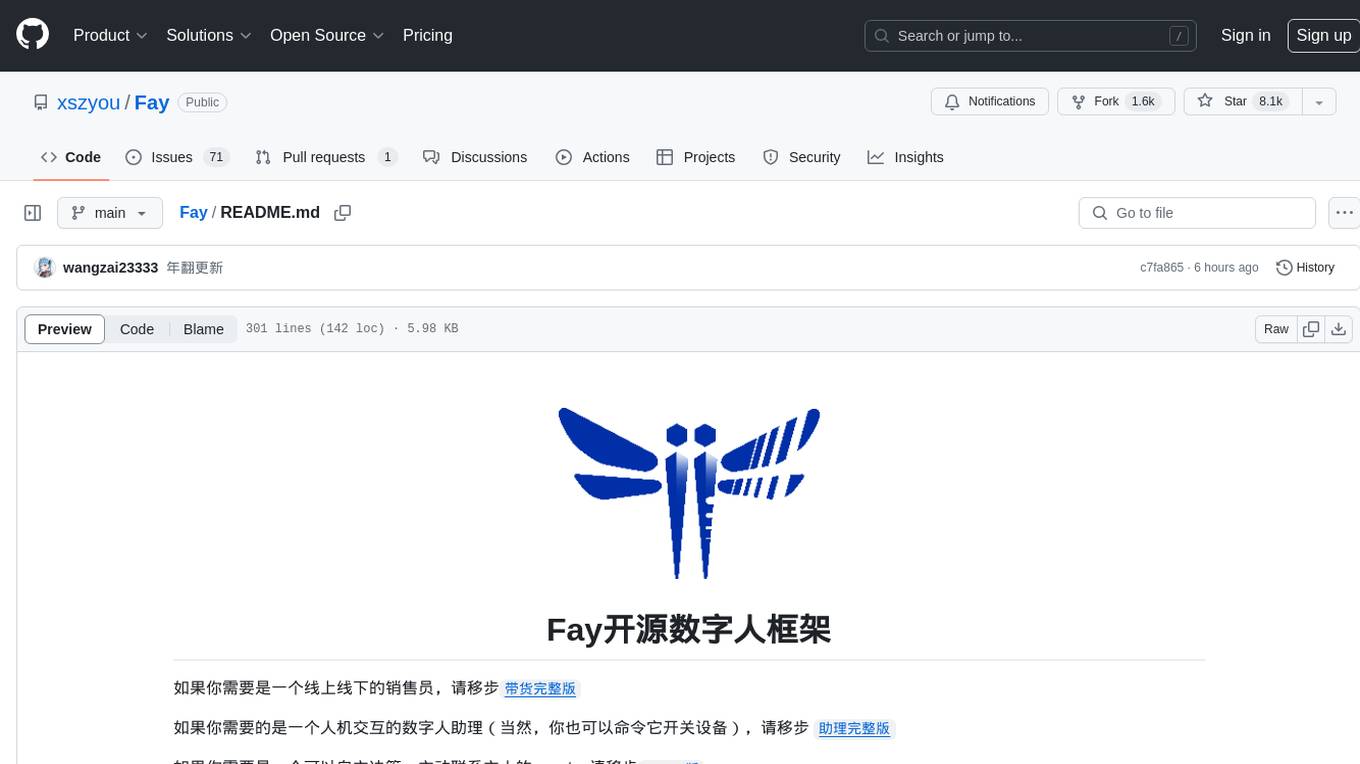
Fay
Fay is an open-source digital human framework that offers different versions for various purposes. The '带货完整版' is suitable for online and offline salespersons. The '助理完整版' serves as a human-machine interactive digital assistant that can also control devices upon command. The 'agent版' is designed to be an autonomous agent capable of making decisions and contacting its owner. The framework provides updates and improvements across its different versions, including features like emotion analysis integration, model optimizations, and compatibility enhancements. Users can access detailed documentation for each version through the provided links.
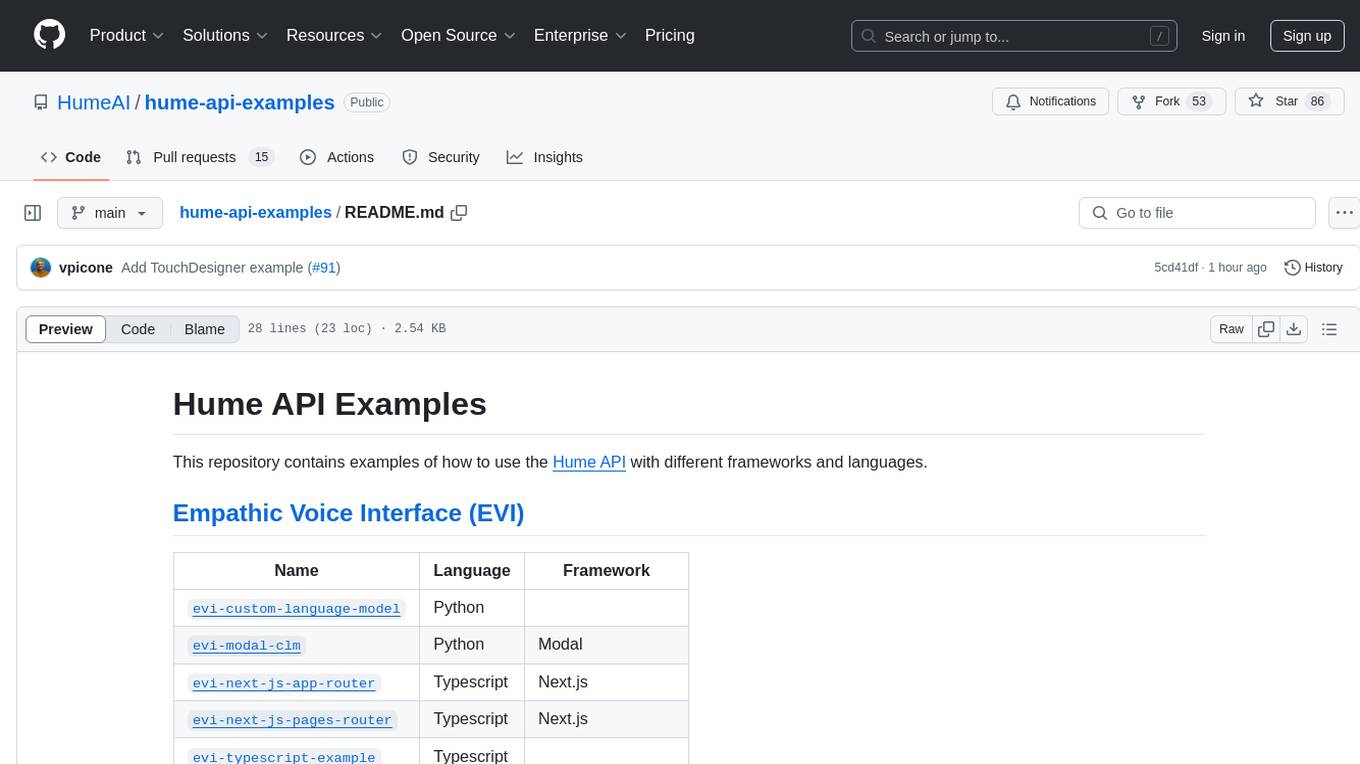
hume-api-examples
This repository contains examples of how to use the Hume API with different frameworks and languages. It includes examples for Empathic Voice Interface (EVI) and Expression Measurement API. The EVI examples cover custom language models, modal, Next.js integration, Vue integration, Hume Python SDK, and React integration. The Expression Measurement API examples include models for face, language, burst, and speech, with implementations in Python and Typescript using frameworks like Next.js.
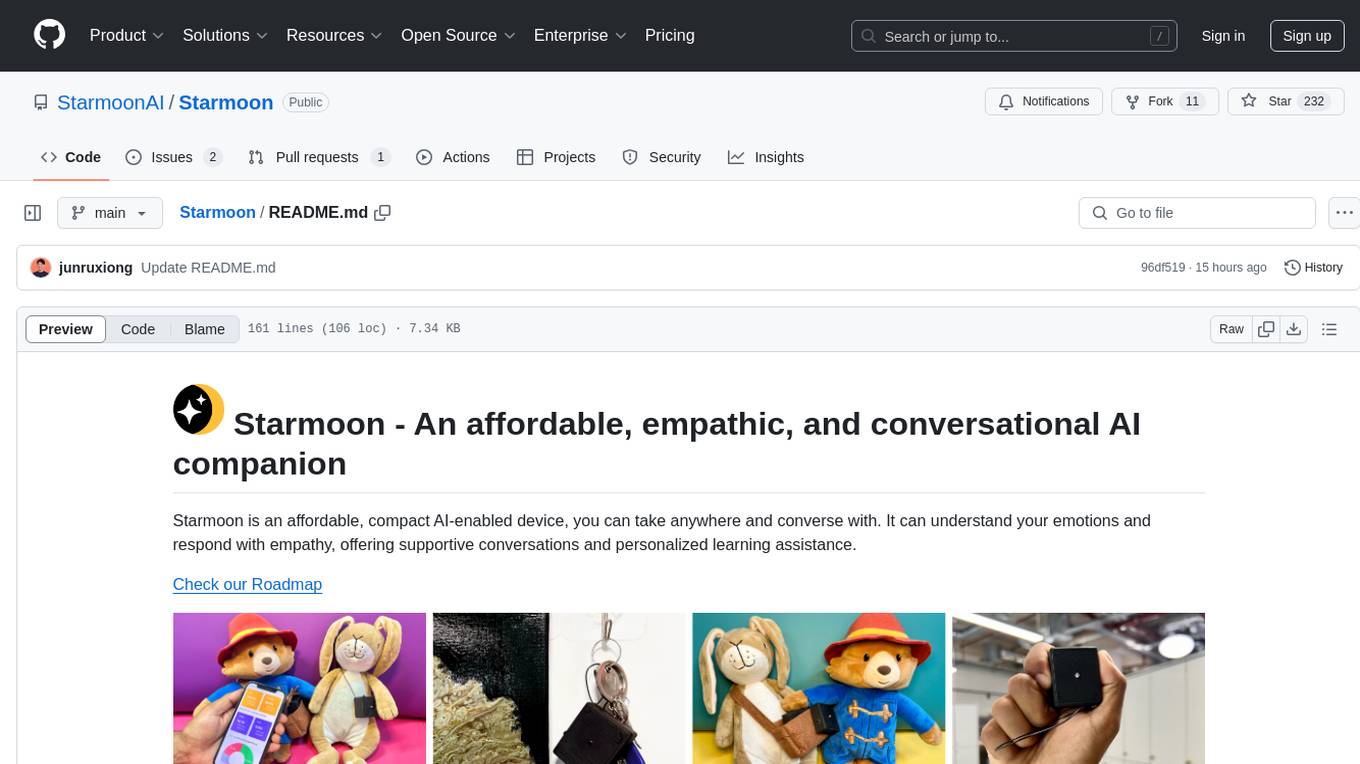
Starmoon
Starmoon is an affordable, compact AI-enabled device that can understand and respond to your emotions with empathy. It offers supportive conversations and personalized learning assistance. The device is cost-effective, voice-enabled, open-source, compact, and aims to reduce screen time. Users can assemble the device themselves using off-the-shelf components and deploy it locally for data privacy. Starmoon integrates various APIs for AI language models, speech-to-text, text-to-speech, and emotion intelligence. The hardware setup involves components like ESP32S3, microphone, amplifier, speaker, LED light, and button, along with software setup instructions for developers. The project also includes a web app, backend API, and background task dashboard for monitoring and management.
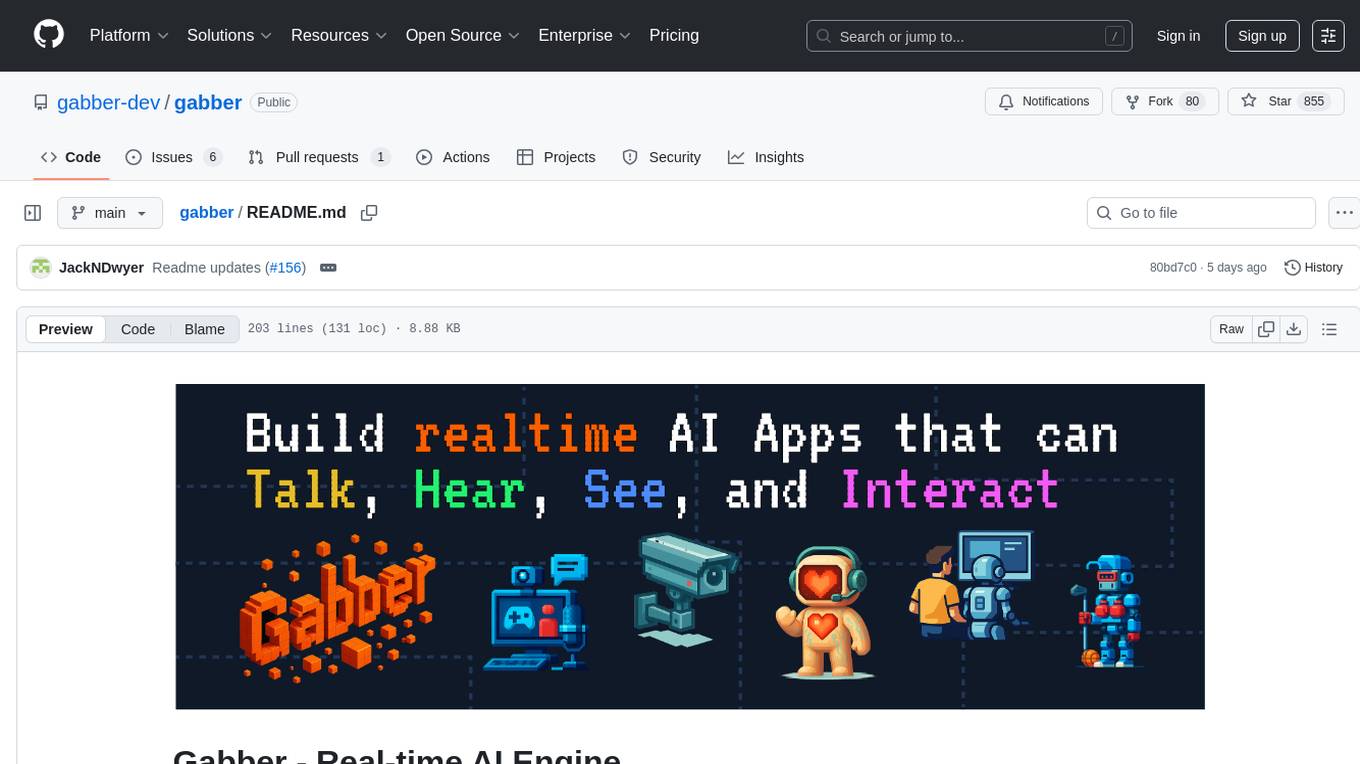
gabber
Gabber is a real-time AI engine that supports graph-based apps with multiple participants and simultaneous media streams. It allows developers to build powerful and developer-friendly AI applications across voice, text, video, and more. The engine consists of frontend and backend services including an editor, engine, and repository. Gabber provides SDKs for JavaScript/TypeScript, React, Python, Unity, and upcoming support for iOS, Android, React Native, and Flutter. The roadmap includes adding more nodes and examples, such as computer use nodes, Unity SDK with robotics simulation, SIP nodes, and multi-participant turn-taking. Users can create apps using nodes, pads, subgraphs, and state machines to define application flow and logic.
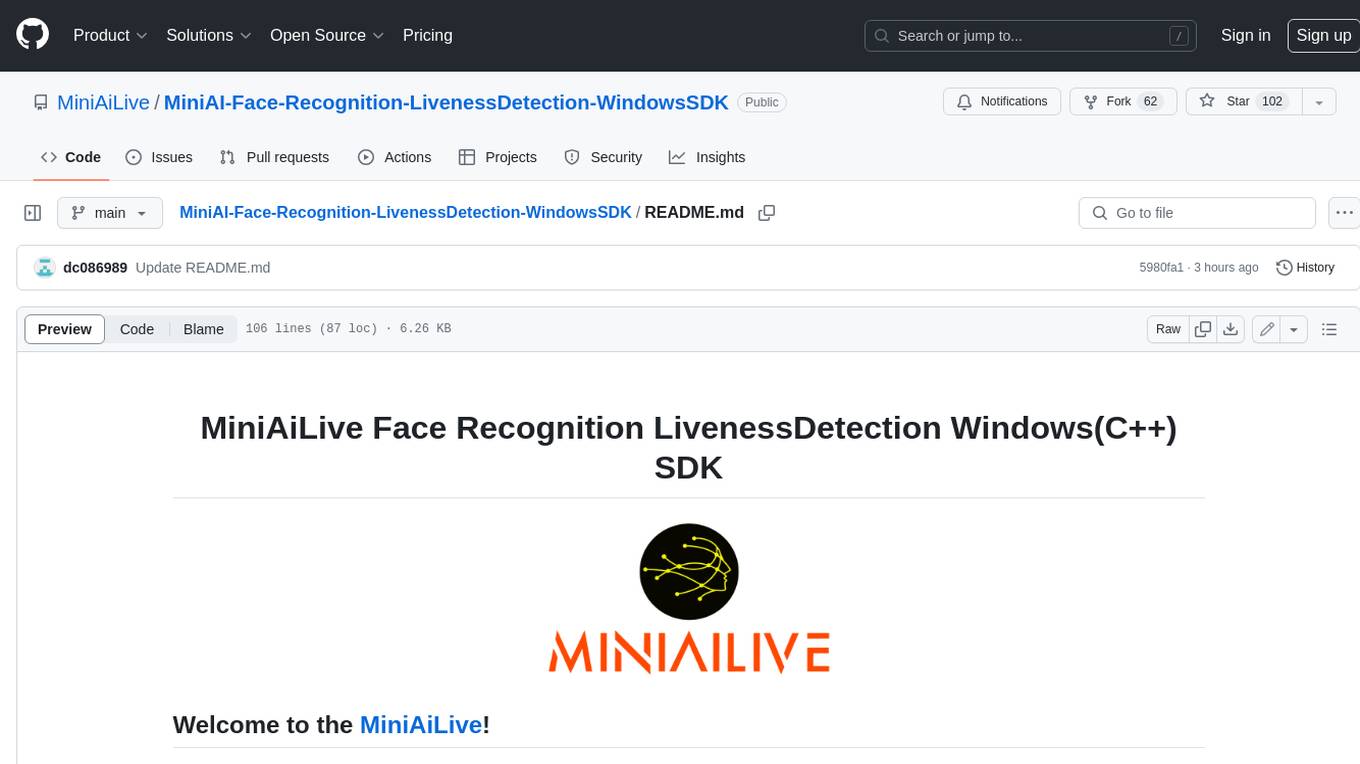
MiniAI-Face-Recognition-LivenessDetection-WindowsSDK
This repository contains a C++ application that demonstrates face recognition capabilities using computer vision techniques. The demo utilizes OpenCV and dlib libraries for efficient face detection and recognition with 3D passive face liveness detection (face anti-spoofing). Key Features: Face detection: The SDK utilizes advanced computer vision techniques to detect faces in images or video frames, enabling a wide range of applications. Face recognition: It can recognize known faces by comparing them with a pre-defined database of individuals. Age estimation: It can estimate the age of detected faces. Gender detection: It can determine the gender of detected faces. Liveness detection: It can detect whether a face is from a live person or a static image.
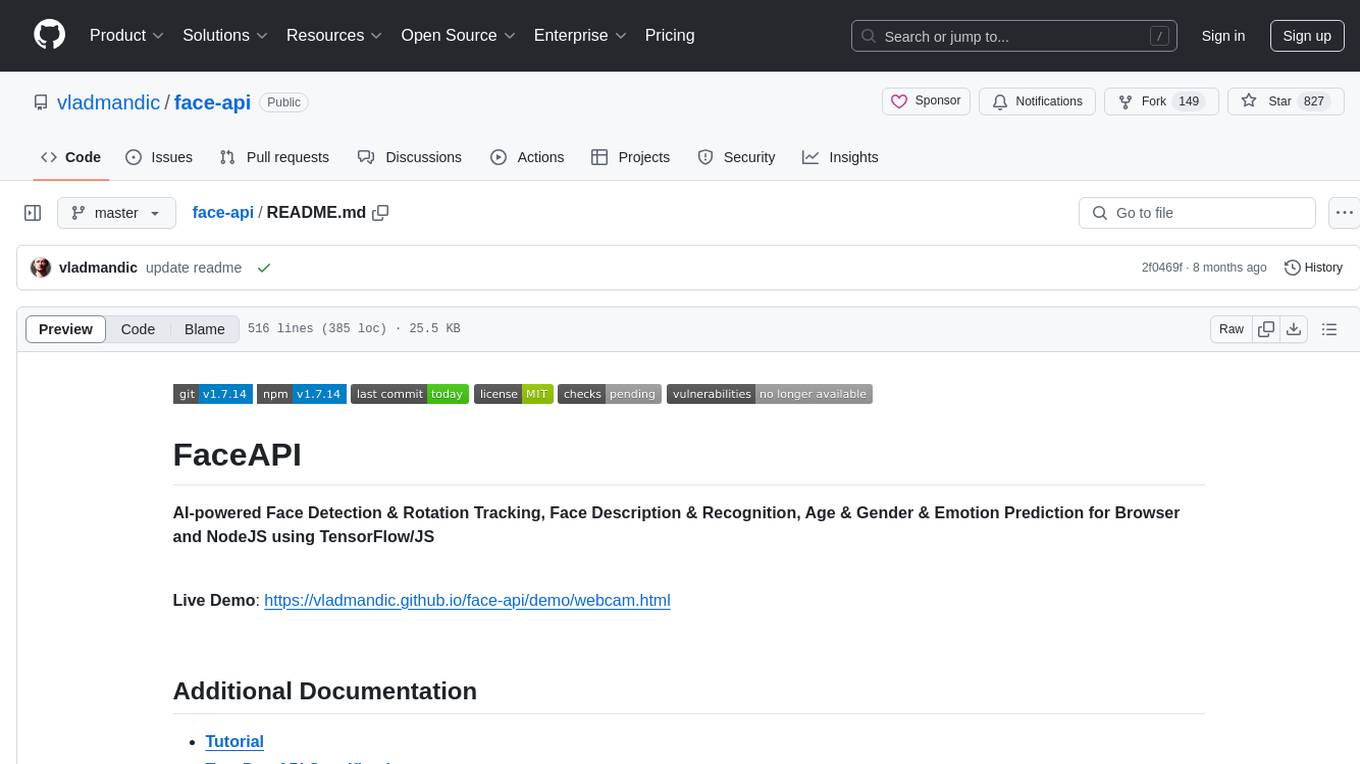
face-api
FaceAPI is an AI-powered tool for face detection, rotation tracking, face description, recognition, age, gender, and emotion prediction. It can be used in both browser and NodeJS environments using TensorFlow/JS. The tool provides live demos for processing images and webcam feeds, along with NodeJS examples for various tasks such as face similarity comparison and multiprocessing. FaceAPI offers different pre-built versions for client-side browser execution and server-side NodeJS execution, with or without TFJS pre-bundled. It is compatible with TFJS 2.0+ and TFJS 3.0+.
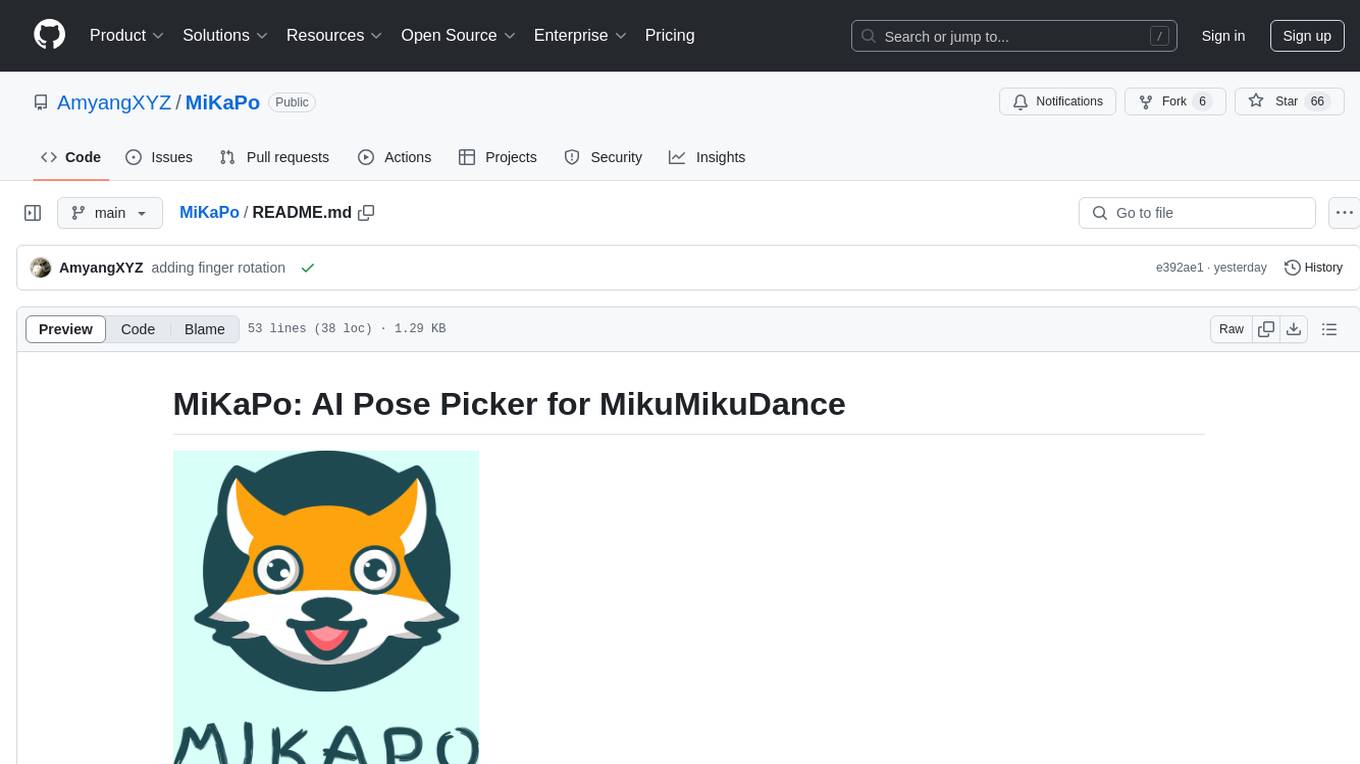
MiKaPo
MiKaPo is a web-based tool that allows users to pose MMD models in real-time using video input. It utilizes technologies such as Mediapipe for 3D key points detection, Babylon.js for 3D scene rendering, babylon-mmd for MMD model viewing, and Vite+React for the web framework. Users can upload videos and images, select different environments, and choose models for posing. MiKaPo also supports camera input and Ollama (electron version). The tool is open to feature requests and pull requests, with ongoing development to add VMD export functionality.
For similar jobs

human
AI-powered 3D Face Detection & Rotation Tracking, Face Description & Recognition, Body Pose Tracking, 3D Hand & Finger Tracking, Iris Analysis, Age & Gender & Emotion Prediction, Gaze Tracking, Gesture Recognition, Body Segmentation
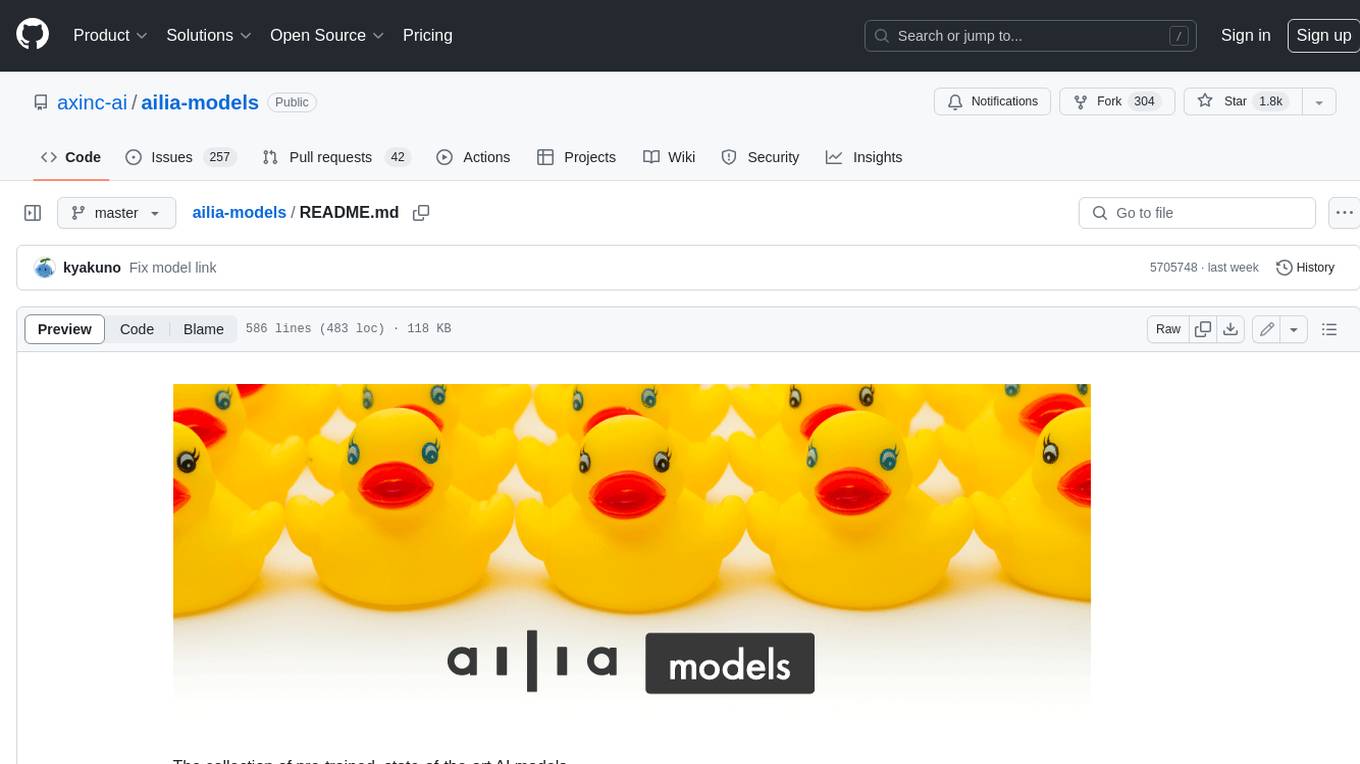
ailia-models
The collection of pre-trained, state-of-the-art AI models. ailia SDK is a self-contained, cross-platform, high-speed inference SDK for AI. The ailia SDK provides a consistent C++ API across Windows, Mac, Linux, iOS, Android, Jetson, and Raspberry Pi platforms. It also supports Unity (C#), Python, Rust, Flutter(Dart) and JNI for efficient AI implementation. The ailia SDK makes extensive use of the GPU through Vulkan and Metal to enable accelerated computing. # Supported models 323 models as of April 8th, 2024




















